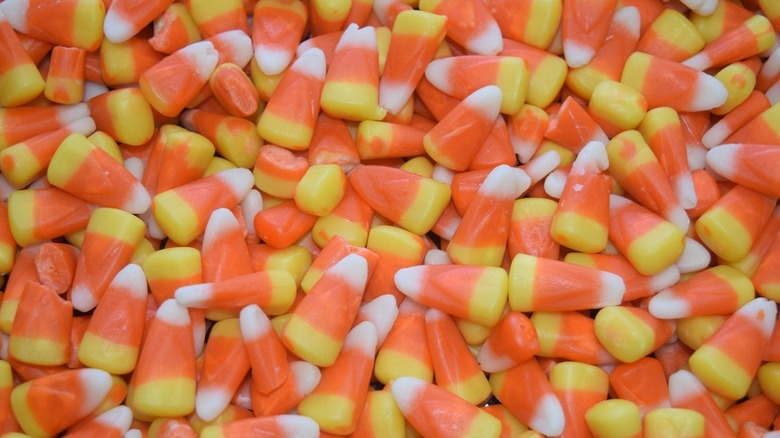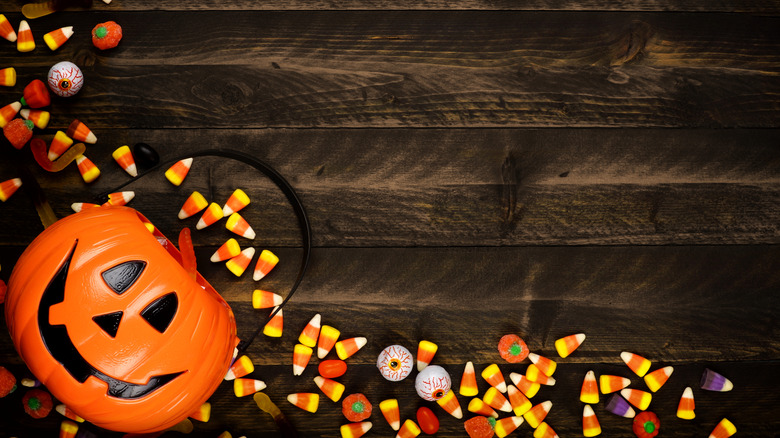These Are The Actual Ingredients In Candy Corn
Whether you love it or hate it, the Halloween classic candy corn is here to stay. Though it has been sparking arguments between friends and family since it was first invented in the 1880s — with people very clearly having opinions on its worth, or lack thereof — it shows no signs it will be going anywhere any time soon. According to a National Confectioners Association poll, candy corn ranks second on a list of people's favorite Halloween candy, says Vox, and it even was named the number-one Halloween treat of choice in seven states, including Alabama, Nevada, and Rhode Island, among others (per CandyStore.com).
In fact, about 35 million pounds of candy corn are produced each year, which is the equivalent of a whopping 9 billion pieces of sweet candy corn kernels, according to Vox — so someone must be eating it. But exactly how do manufacturers turn raw ingredients into the world's most controversial candy? Although we all know that candy corn is very sweet, the process of producing these bright, multi-colored kernels is a little more complicated than simply melting the sugar into a triangle-shaped mold and calling it a day. Here's how it happens.
Candy corn contains a high amount of sugar - and other ingredients
While sugar is certainly a main ingredient in candy corn, several different items go into the candy's creation as well. In addition to sugar, there's corn syrup, confectioner's glaze, and dextrose that give the candy its signature sickly sweet flavor, along with sesame oil, honey, artificial flavoring, and a bit of salt, according to Business Insider. Yellow 6, yellow 5, and red 3 dyes are also added to help give the candy its distinctive yellow and orange coloring. Vegetarians and vegans should note that the seasonal treat also contains gelatin, a protein made from animal bones and hide that is commonly found in many candies.
And since one piece of candy corn has just 7.5 calories and no fat, it might seem that it's a healthier option than many other Halloween candies. However, nutritionists warn that this is not necessarily the case. Since the pieces are so small, many people tend to overeat without even realizing it. "If you have three pieces, it's not so bad, but most people don't do that," Natalie Rizzo, a New York City-based registered dietitian, told NBC News. A serving of 19 pieces, which is perhaps a more realistic portion size given how easy it is to pop these kernels into your mouth, would contain about 140 calories and a whopping 28 grams of sugar, per NBC News. So, if you're a candy corn lover, you might want to portion out your servings before you start snacking — especially if you are trying to be mindful of your sugar intake this Halloween.

